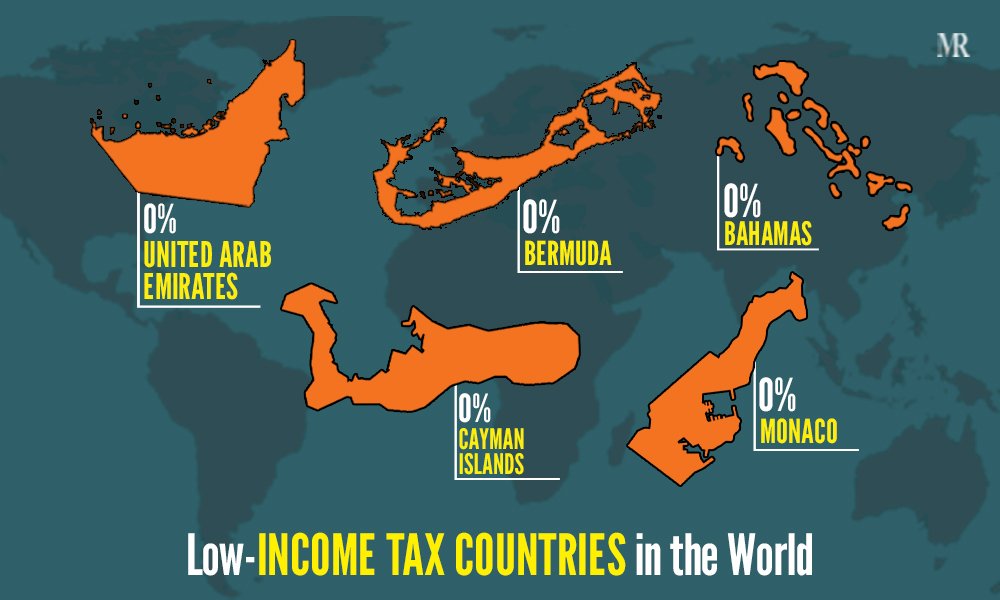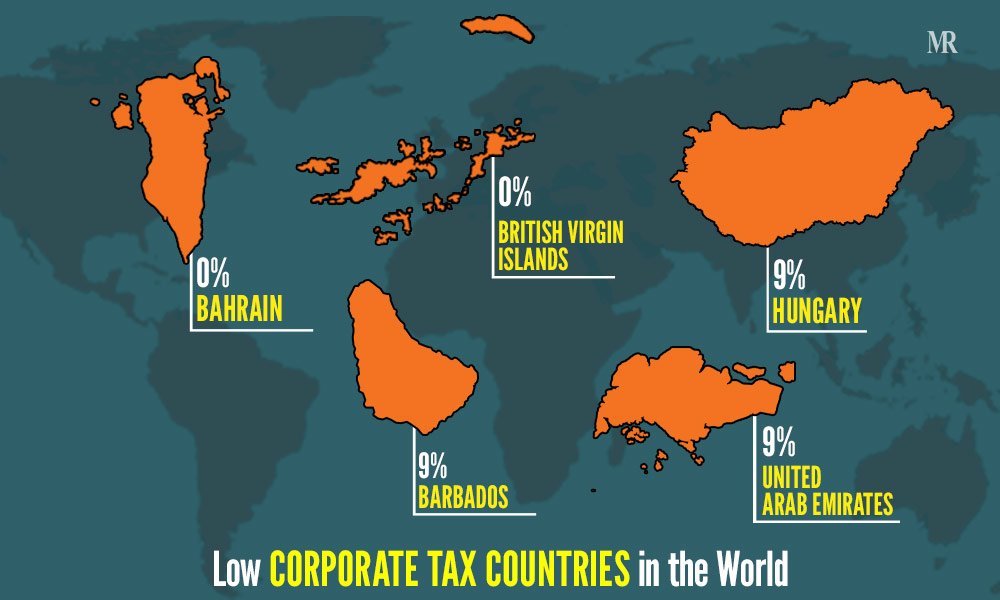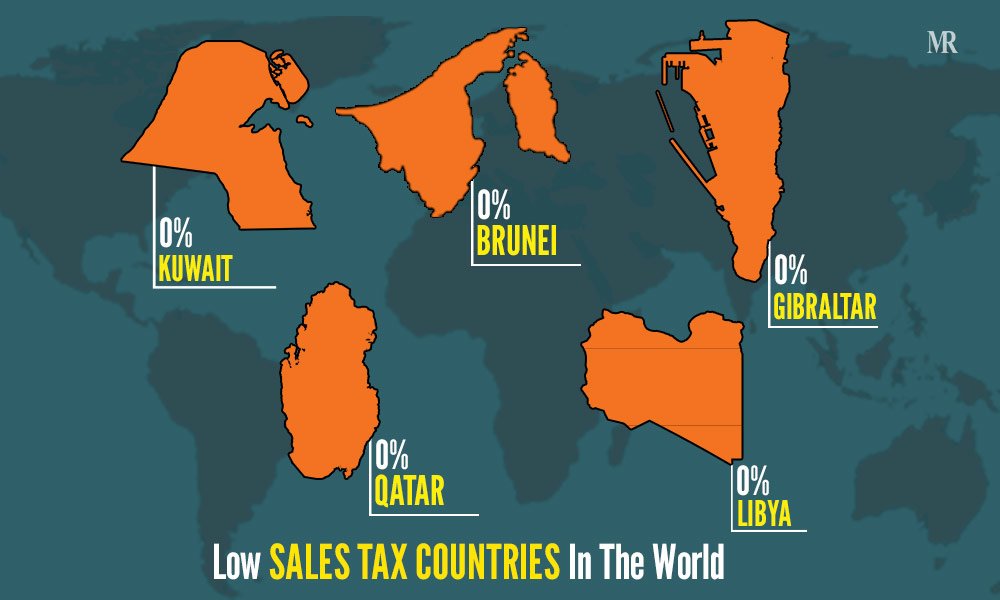Before diving into the specifics of jurisdictions with favorable tax regimes, it’s important to understand that optimizing taxes often requires more than simply relocating to a low-rate country. Many individuals and businesses turn to expert support to ensure full compliance and maximize financial benefits. That’s where the best tax relief companies come in — offering in-depth knowledge of international tax laws and effective strategies to minimize liabilities, structure income efficiently, and avoid costly missteps. Working with a trusted advisor can make all the difference in successfully navigating complex tax landscapes.
As we look ahead to 2025, taxes are still a major factor for everyone, whether you’re an individual or a business. If you’re looking to make the most of your money, it’s really important to know about low tax countries. This guide will take a look at some of the places that offer the best tax situations, which can help you keep more of what you earn, spend less on everyday things, and lower your business costs.
We will explore renowned low tax countries and their policies across three key categories:
- Personal Income Tax: Countries with minimal or no tax on individual earnings.
- Sales Tax (VAT/Consumption Tax): Nations with very low or zero taxes on goods and services.
- Corporate Tax: Jurisdictions offering competitive corporate tax rates to attract businesses.
This blog post aims to provide a factual overview of these low-tax jurisdictions, drawing on economic data and reputable sources to offer informed insights.
Low-Income Tax Countries in the World

Personal income tax is a government levy on individual earnings; a 0% rate means residents keep their entire income without this direct tax, enhancing financial attractiveness. These countries stand out for imposing effectively 0% personal income tax at the national level:
| Country | Continent | Personal Income Tax |
| United Arab Emirates | Asia | 0% |
| Bermuda | North America | 0% |
| Bahamas | North America | 0% |
| Cayman Islands | North America | 0% |
| Monaco | Europe | 0% |
1. United Arab Emirates
- Economy Size: $568.567 Billion (2025)
- Income Tax Rate 0%
One of the biggest draws to living and working in the UAE has always been the fact you don’t pay income tax. It’s a key part of how they’ve built such a strong economy, attracting people and businesses from all over the world.
Now, there’s been a bit of a shift with the new Corporate Tax law. Basically, if you’re a business owner in the UAE and your annual revenue goes over 1 million AED, you’ll pay a 9% tax. However, your regular salary, any money you make from personal investments, or income from real estate you own? Those things are still tax-free.
The UAE has been able to maintain its status as one of the low tax countries thanks to its plentiful oil and gas resources, and its booming tourism and trade sectors. They haven’t historically needed to rely on taxing people’s salaries to fund government services.
2. Bermuda
- Economy Size: $7.55 Billion (2023)
- Income Tax Rate 0%
There is no tax on personal income, or taxation of investment income and capital gains in Bermuda. They’ve built their whole economy on being a powerhouse for finance and insurance—seriously, it’s like 85% of what they do.
Basically, they’ve been this offshore financial center where they played by their own rules on taxes for ages. Instead of taking a slice of your paycheck, they get their money from taxing big companies (the new 15% thing) and by charging duties on stuff coming into the country. It’s how they’ve turned themselves into this major hub for international business and all that reinsurance stuff.
3. Bahamas
- Economy Size: $14.39 Billion (2025)
- Income Tax Rate 0%
The Bahamas is a well-known haven for those seeking countries with less income tax. They don’t tax personal income, inheritance, or wealth, which is a major draw. However, you’ll still contribute to social security, known as the National Insurance Board, with rates varying depending on whether you’re employed or self-employed.
Basically, the Bahamas skips income tax, but gets revenue from tourists and imports. And getting a residency isn’t too tough. If you want your money to go further in a beautiful place, it’s a solid option.
4. Cayman Islands
- Economy Size: $6.84 Billion (2022)
- Income Tax Rate: 0%
The Cayman Islands are synonymous with the “no tax” model, particularly for corporations and individuals. Its economy is dominated by financial services, attracting multinational corporations seeking tax-efficient locations.
The absence of corporate income tax, capital gains tax, and estate tax has made it a leading offshore financial center. Revenue is generated primarily through fees related to financial services and indirect taxation.
5. Monaco
- Economy Size: $8.78 Billion (2022)
- Income Tax Rate: 0%
Monaco is famous for being a tax haven, and for good reason. You won’t pay any taxes on your personal income, dividends, or capital gains. That’s a huge part of what makes it so attractive to wealthy individuals.
This zero-income-tax policy, which has been in place since 1869, is a key part of Monaco’s identity. Instead of income tax, the government funds itself through things like VAT, taxes on businesses, and revenue from state-owned monopolies, like casinos and tobacco sales.
Combine that with a reputation for safety and a famously luxurious lifestyle, and it’s easy to see why Monaco is a top choice for those looking for low tax countries.
Low Corporate Tax Countries in the World

Another list of low tax countries mentions the corporate tax favorable nations. Economic reform is necessary to keep the GDP afloat. Corporates functioning uninterruptedly indicates, steady growth. Hence, these listed countries understand this and try to attract as many as possible.
| Country | Continent | Corporate Tax Rate |
| Bahrain | Asia | 0% |
| British Virgin Islands | North America | 0% |
| Barbados | North America | 9% |
| Hungary | Europe | 9% |
| UAE | Asia | 9% |
1. Bahrain
- Economy Size: $49.45 Billion (2025)
- Corporate Tax Rate: 0%
Bahrain, Asia’s third-smallest country, has a diverse, high-income economy. While petroleum drives 60% of exports, 70% of government revenue, and 11% of GDP, they’ve also invested heavily in banking and tourism, attracting major financial institutions. Aluminum is another key export.
Bahrain generally has no income, sales, capital gains, or estate taxes. However, oil and gas companies face a 46% tax on net profits. This makes Bahrain one of the no tax countries, appealing to many.
2. British Virgin Islands
- Economy Size: $500 Million (2019)
- Corporate Tax Rate: 0%
The British Virgin Islands (BVI) are famous for being a really good place for businesses, tax-wise. If you set up a company there, you’re looking at no corporate taxes, capital gains taxes, or wealth taxes. Plus, most of what the company does, like buying and selling property or stocks, is also free from income taxes and stamp duties.
Now, don’t get the wrong idea – the BVI isn’t a place where you can just hide your money. They play by the rules when it comes to sharing tax information with other countries, both regularly and when asked. They’re also serious about stopping money laundering and terrorism financing, working closely with law enforcement. Therefore, the British Virgin Islands are among the favorite low tax countries.
3. Barbados
- Economy Size: $6.863 Billion (2025)
- Corporate Tax Rate: 9%
Barbados, which used to be all about super low corporate taxes, is now getting in line with the rest of the world. They’ve signed onto some international tax agreements, like the Pillar Two Subject to Tax Rule. This makes sure big companies pay their fair share, especially when money’s moving between different parts of the same company.
Barbados has also implemented a Qualified Domestic Minimum Top-Up Tax (QDMTT) for large multinational enterprises with revenues exceeding EUR 750 million, setting a minimum 15% effective tax rate.
While adjusting to global norms, Barbados aims to maintain a balance between international compliance and a competitive business environment. Basically, they’re going from super low taxes to fitting in with the new global minimum.
4. Hungary
- Economy Size: $212.39 Billion (2023)
- Corporate Tax Rate: 9%
Hungary stands out in the European Union for its remarkably low corporate income tax (CIT) rate. Since 2017, they’ve maintained a 9% CIT, which has been a major factor in attracting businesses to the country.
The Hungarian tax system differentiates between resident and non-resident companies. If your company is a resident, you’ll be taxed on your worldwide income. However, if you’re a non-resident, you’ll only be taxed on the income you generate through your branch operations within Hungary.
Hungary also uses a minimum tax base calculation to ensure companies contribute. If profits are low, a 2% minimum tax base applies. Companies also have the option for detailed financial reporting.
5. United Arab Emirates
- Economy Size: $568.567 Billion (2025)
- Corporate Tax Rate: 9%
The United Arab Emirates (UAE) is implementing a federal corporate tax (CT) to modernize its fiscal framework. In the past, there were rules for big income taxes, but they weren’t really used. Instead, taxation was sector-specific.
Foreign bank branches operating in the UAE have been subject to a fixed 20% income tax under separate Emirate-level banking regulations. Companies involved in oil, gas, and petrochemical activities have been taxed based on individual concession agreements or fiscal letters, leading to varying rates.
The introduction of the federal CT aims to solidify the UAE’s position as a prominent international business and investment center. According to the Ministry of Finance, the CT structure includes a 0% rate for taxable income up to AED 375,000.
Low Sales Tax Countries In The World

Value-added tax, or VAT, is not the same as sales tax. VAT is a tax levied on the added value of goods and services throughout the production or distribution process, whereas Sales tax is a tax levied on the purchase price of goods and services. In short sales tax is paid by end consumers, and VAT is paid by merchants in the supply chain.
In certain countries, VAT is referred to as a sales tax. However, they differ in principle and computation.
| Country | Continent | Sales Tax Rate |
| Kuwait | Asia | 0% |
| Brunei | Asia | 0% |
| Gibraltar | Europe | 0% |
| Qatar | Asia | 0% |
| Libya | Africa | 0% |
1. Kuwait
- Economy Size: $161.95 Billion (2025)
- Sales Tax Rate: 0%
Kuwait, famously known as one of the countries with low tax rates, is navigating changes to its tax system. While they’re still talking about VAT as part of a wider Gulf region plan, they are definitely bringing in a 15% corporate tax for big multinational companies in 2025. That’s a pretty big change from how it’s been. Customs duties remain at 5%, with exceptions.
Currently, Kuwait lacks excise, property, and transfer taxes, as well as payroll taxes beyond social security contributions. This tax structure is evolving as Kuwait aligns with regional policies and introduces the new corporate tax.
2. Brunei
- Economy Size: $15.99 Billion (2023)
- Sales Tax Rate: 0%
Brunei’s a really interesting case when it comes to taxes. Basically, they don’t have a sales tax at all. And it’s not because they’re struggling, quite the opposite! Brunei’s a very wealthy country, with a really strong economy and a high standard of living.
The thing is, they’ve built up a ton of wealth over the years, mostly from their huge oil and gas reserves. So, they don’t really need to rely on taxes to fund things like most countries do. Plus, they’re really focused on keeping their economy stable, and they figure introducing a sales tax could potentially shake things up. They also have a massive foreign exchange reserve, which acts like a safety net if the global economy hits a rough patch. That’s why Brunei’s often mentioned as one of the top low tax countries.
3. Gibraltar
- Economy Size: $2.9 Billion (2025)
- Sales Tax Rate: 0%
Gibraltar’s tax system is pretty interesting. You won’t find things like capital gains tax, wealth tax, sales tax, excise tax, or VAT there. Instead, pretty much everything you import gets a 10% duty.
For businesses, the main tax is Corporation Tax, and everyone pays Social Insurance contributions. You’ll also see stamp duties on some transactions and property taxes, called ‘rates.’
Gibraltar’s economy is pretty diverse, which helps them generate revenue. They’ve got a lot of shipping trade, offshore banking, and they’re a popular spot for international conferences. Plus, the financial sector, tourism, shipping fees, and those import duties on everyday goods all bring in money.
4. Qatar
- Economy Size: $240.217 Billion (2025)
- Sales Tax Rate: 0%
Qatar’s tax landscape is evolving. Currently, there’s no VAT or sales tax, but everyone’s expecting a 5% VAT to pop up sometime soon, following GCC guidelines. If you’re bringing stuff in from outside the Gulf, you’ll generally pay a 5% customs duty, though they do bump that up for things like tobacco. And, you know, during the pandemic, they temporarily dropped some duties on essential items, which was a nice touch.
They do have excise taxes, which started in 2019. Those are mainly on things like tobacco, energy drinks, and certain sugary drinks. But, the good news is, you won’t find property taxes, transfer taxes, payroll taxes, or stamp taxes. It’s like they’re trying to find a balance, keeping things competitive for businesses while also getting in line with what everyone else in the region is doing.
5. Libya
- Economy Size: $44.812 Billion (2025)
- Sales Tax Rate: 0%
Libya’s tax system lacks a Value Added Tax (VAT). While general customs duties were abolished in 2005, a 5% service fee applies to most imports, with exceptions for investments and the oil sector. Minor import-related dues also exist, and importers may need to provide guarantees.
Libya does not levy excise, property, or transfer taxes. However, a Stamp Duty Law is in effect, imposing duties on contracts and transactions, particularly relevant to corporate entities. Employers are responsible for collecting payroll taxes and contributions, and tax audits primarily focus on employer compliance, with individuals not required to file annual income statements.
Now that we have reached the end of the list of the lowest-taxed countries in the world, let’s understand some expert insights on the above.
Expert Takeaways
| Expert Insights | Example |
| Resource Wealth vs. Tax Policy | Many low tax countries with zero or minimal taxes, especially in income and sales categories (UAE, Kuwait, Qatar, Brunei), are significantly supported by substantial natural resource wealth.This model may be sustainable in the short-to-medium term but faces long-term challenges related to resource depletion and global economic shifts [IMF Fiscal Monitor]. |
| Financial Sector Specialization | Jurisdictions like Bermuda, Cayman Islands, BVI, and Monaco leverage low corporate or income taxes to specialize in financial services. This strategy effectively attracts international capital and business, contributing significantly to their economies.However, they face increasing international scrutiny and pressure for tax transparency and fair taxation [OECD Base Erosion and Profit Shifting (BEPS) Project]. |
| Global Tax Reforms and Adaptations | The global trend is towards greater tax transparency and minimum corporate tax rates. Even historically low-tax jurisdictions like Barbados and the UAE are adapting their tax systems to align with these international standards.Businesses and individuals seeking low-tax environments must be aware of these evolving regulations and potential future changes. |
| Beyond Tax Rates: Holistic Considerations | While low taxes are attractive, individuals and businesses should consider the broader economic and social environment.Factors like political stability, infrastructure quality, cost of living, access to markets, and legal frameworks are equally crucial when evaluating a location for residency or business operations. |
| Due Diligence is Essential | This overview provides a starting point. Tax laws are complex and subject to change. Individuals and businesses should always conduct thorough due diligence and seek professional tax advice specific to their circumstances before making decisions based solely on low tax rates. |
Note: The economic data and tax information presented here are based on information available as of late 2024, with projections where indicated. Data is primarily sourced from reputable international organizations such as the IMF, PwC, Trading Economics, and national government statistical agencies. For detailed and up-to-date tax regulations, always consult with qualified tax professionals and official government sources within each jurisdiction.
If you found this list of the lowest-taxed countries interesting, don’t miss to check out our blog on the highest-taxed countries!












